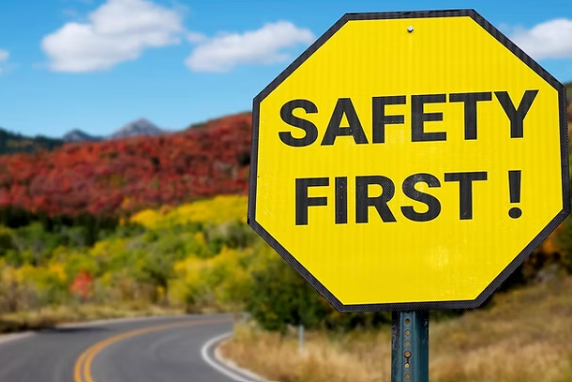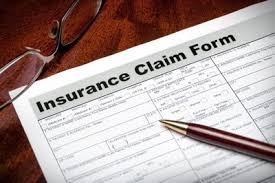The increasing number of deaths and injuries caused by accidents each year continues to pose a problem. As noted by the world health organization (WHO), approximately 1.3 million individuals lose their lives yearly due to accidents involving vehicles. Furthermore, somewhere between 20 to 50 million victims suffer serious, but non-fatal, injuries each year. Most of the accidents can be prevented. Efforts made towards road safety awareness will assist in lowering the above statistics. Following the correct guidelines will allow life threatening incidents to be avoided and make the roads safer.

Maintain Safe Following Distance
Tailgating refers to the practice of driving too closely behind another vehicle. If the vehicle directly in front suddenly hits the brakes, there isn’t a margin for mistakes. A following distance gives space in case of sudden braking to avoid a rear end crash. Another important consideration is the three seconds rule where you don’t get closer than three seconds from the vehicle in front of you. Weather factors should also be carefully monitored, like foggy or rainy days which requires increased distance.
Obey Speed Limits
One of the leading causes of vehicular accidents is exceeding the speed limit. A driver who goes beyond the speed limit not only compromises his own life but the lives of others as well. Due to the consistent patterns of traffic congestion, time of day, and accidents in the area, speed limits are set for each zone. Following posted speed limits provides additional time to handle unforeseen circumstances like a child suddenly running out into the street or a car ahead braking suddenly. Further reduced speeds near residential houses and schools, as well as during bad weather, are also essential.
Always Use a Seatbelt
One of the most basic rules each driver and passenger must observe is to always wear a seatbelt. Seatbelts, whether they are on the driver or passenger side, completely mitigate the damage to injury or death that may occur due to a crash. Seatbelts prevent passengers from being thrown from the vehicle and reduce bodily injury by permitting the body to brace for impact. As much as this is legally required in many countries, more so it’s a matter of safety.
Don’t Drive While Intoxicated
Drug and alcohol abuse is a bad combination together with motor vehicles and should never be done under the same roof. These substances alter the normal functions of the brain and reduces motor coordination along with reflexes increasing the likelihood of accidents. When going out with the intention of drinking, always ensure there is a designated driver. This choice will greatly contribute to the reduction of fatalities.
Observe Traffic Signals and Road Signages
Road signals and traffic lights have a significant impact on averting road misfortunes and managing traffic. Is it necessary to obey red traffic lights, stop signs and lane directions? Ignoring these signs could result in an accident and ugly traffic chaos. All drivers should be properly trained on navigational signs and signage compliance. Also, giving and taking the right of way especially at crosswalks and rotaries needs good knowledge of clues.
Communication Through Indicators and Light Signals
Everyone should be cautious regarding signs due to their importance in averting road accidents and moving vehicles. Especially during changing lanes, turning, or merging, indicators are essential because they allow other motorists to be aware of the driver’s plans. Indicators assist other vehicles; if used properly, they help avoid causing unnecessary adjustments. Where they are not used, there is a blend of confusion which can lead to accidents, particularly in populated areas.
Proper Maintenance of the Vehicle
To make sure that your vehicle will function properly, practice routine and proper maintenance. This entails conducting a walk around check of your vehicle’s brakes, tires, lights, windscreen wipers, and fluid levels. Without a doubt paying close attention to the tires and brakes can save a life during emergencies. Ensure that there are regular checkups set with your car technician to maintain your vehicle especially when a long trip is planned.
Driving Slowly Under Bad Weather Conditions
Fog, rain, and snow are examples of bad weather which reduce visibility and traction on roads. In these circumstances, there is need to appropriate reduced speed and heightened distance while using headlights as recommended. In more extreme ant these conditions, it is advisable to cancel the trip altogether.
Pay Attention to Pedestrians and Bicyclists
Drivers need to allow pedestrians the right of way and for pedestrians, they need to clear the intersection. Bicyclists have no control over sidewalk pedestrian traffic. Therefore, bikes should not ride unprotected on pedestrian ways. Paths reserved for bikes should be used, and during the dark, lights or reflective vests should be worn. Following these measures helps improve safety for motorists, cyclists and pedestrians alike.
Use of Safety Helmets and Other Safety Equipment
Head protection such as helmets during falls and other accidents are necessary not only for riding motorcycles, but bicycles, too. Padded jackets also provide protection to the arms, while gloves and knee guards aid in minimizing injury The pointing and fastening of a helmet could be of equal importance to ensure proper placement of these devices.
Borderline Altering Driving Attitude by Road Rage and Aggressive Driving
Attempts to either speed up or overtake a car while aggressively honking, weaving in front of another car, or reckless speeding, suggests a profound lack of courtesy and civility. Treating the steering wheel with delicate and gentle hand movements together with maintaining a modest speed will ease traffic complications and enhance order on the roads. Road rage and aggression are quite unpredictable, an entire road littered with cars can lead to severe accidents or altercations without much warning.
Borderline Altering Driving Attitude by Road Rage and Aggressive Driving
Driving under the influence of alcohol, drugs, and fatigue all have one shared outcome: dangerous driving. Not getting enough rest or sleep directly affects judgment, reflexes, and decision-making skills; badly increasing chances of making an accident. For long distance driving, it is crucial to schedule and take enough time off, avoid too much late hours, as well as increase alertness by employing other people in driving duties to prevent drowsiness. If you notice feeling sleepy, make sure to get off the road immediately.
Final Thoughts
Road users should maintain focus and show self-control. Always pay attention to the rules that have been created to protect everyone. You are part of road safety no matter if you are a driver or a bystander. Following basic guidelines like fastening seatbelts, obeying driving laws, and keeping a reasonable distance contribute towards minimizing collision and sustaining lives. When we travel together, road safety becomes the duty and responsibility of all of us.













